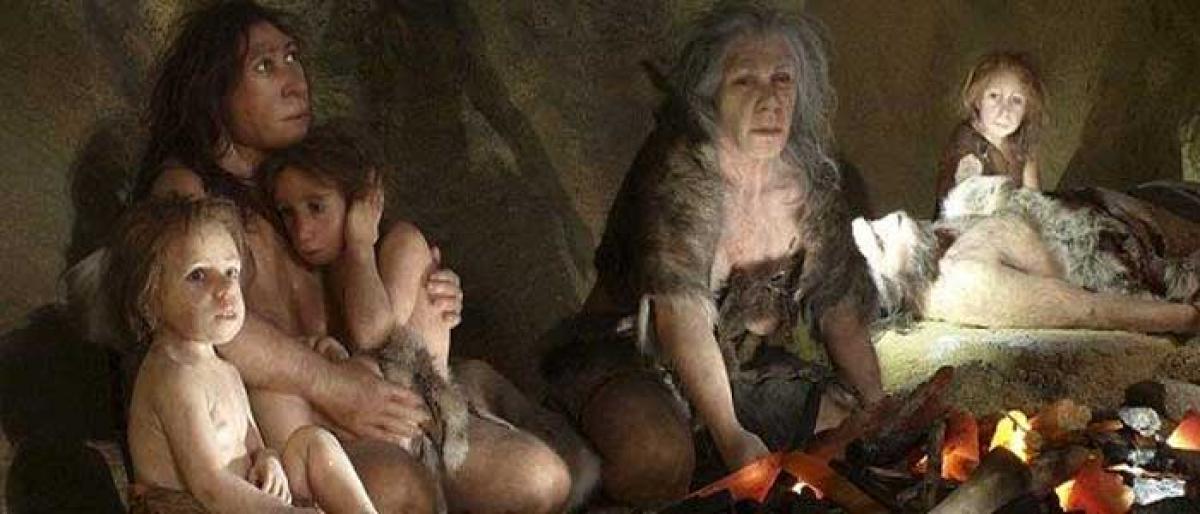Live
- President Murmu Marks 75 Years of Indian Constitution with Commemorative Coin and Stamp
- Three dead in sofa manufacturing factory fire in Greater Noida
- Actor Sri Tej Accused of Cheating by Woman
- Constitution Day 2024: Celebrating India's Foundational Document
- 'When you lose, EVMs are tampered with; when you win, EVMs are fine', SC dismisses PIL
- India signs Final Act of Riyadh Design Law Treaty
- Oppn leaders protest outside Bihar Assembly over reservation, smart meter issues
- Best performances of Nandita Das that prove she’s an acting powerhouse
- Top 5 Plumbing Tips for Better Water Conservation
- Four students hurt in clash over ragging in Bhagalpur Engineering College
Just In

Scientists who studied the fossilised skeleton of Neanderthal child have found that the growth of our ancient relatives were no different than that of a modern-day human child. \"Discerning the differences and similarities in growth patterns between Neanderthals and modern humans helps us better define our own history. Modern humans and Neanderthals emerged from a common recent ancestor, and this
London: Scientists who studied the fossilised skeleton of Neanderthal child have found that the growth of our ancient relatives were no different than that of a modern-day human child. "Discerning the differences and similarities in growth patterns between Neanderthals and modern humans helps us better define our own history. Modern humans and Neanderthals emerged from a common recent ancestor, and this is manifested in a similar overall growth rate," said Antonio Rosas, from Spanish National Research Council (CSIC).
"Applying paediatric growth assessment methods, this Neanderthal child is no different to a modern-day child," said Luis Rios a fellow researcher from CSIC. Neanderthals had a greater cranial capacity than today's humans.
Neanderthal adults had an intracranial volume of 1,520 cubic centimetres, while that of modern adult man is 1,195 cubic centimetres, researchers said. The growth and development of this juvenile Neanderthal matches the typical characteristics of human ontogeny, where there is a slow anatomical growth between weaning and puberty.
In fact, the skeleton and dentition of this Neanderthal present a physiology which is similar to that of a sapiens of the same age, except for the thorax area, which corresponds to a child between five and six years, in that it is less developed. The only divergent aspect in the growth of both species is the moment of maturation of the vertebral column.
In all hominids, the cartilaginous joints of the middle thoracic vertebrae and the atlas are the last to fuse, but in this Neanderthal, fusion occurred about two years later than in modern humans. "The delay of this fusion in the vertebral column may indicate that Neanderthals had a decoupling of certain aspects in the transition from infancy to the juvenile phase," said Rosas.
"Although the implications are unknown, this feature could be related to the characteristic enlarged shape of the Neanderthal torso, or slower brain growth," he said.
The protagonist of this study was 7.7 years old, weighed 26 kilos and measured 111 centimetres at the time of death. Although the genetic analyses failed to confirm the child's sex, the canine teeth and the sturdiness of the bones showed that it to be a male. The researchers establishes that the individual was right-handed and was already performing adult tasks, such as using his teeth as a third hand to handle skins and plant fibres. In addition, they know who his mother was, and that the child had a younger brother in the group.
Furthermore, this child was found to have suffered from enamel hypoplasia when he was two or three years old. Hypoplasia - white spots on the teeth, especially visible in the upper incisors - occurs when the teeth have less enamel than normal, the cause usually being malnutrition or disease. Discovered in 1994, the El Sidron cave - located in Pilona, northern Spain - has provided the best collection of Neanderthals that exists on the Iberian Peninsula. The team has recovered the remains of 13 individuals from the cave. The group consisted of seven adults three teenagers and three younger children.

© 2024 Hyderabad Media House Limited/The Hans India. All rights reserved. Powered by hocalwire.com







